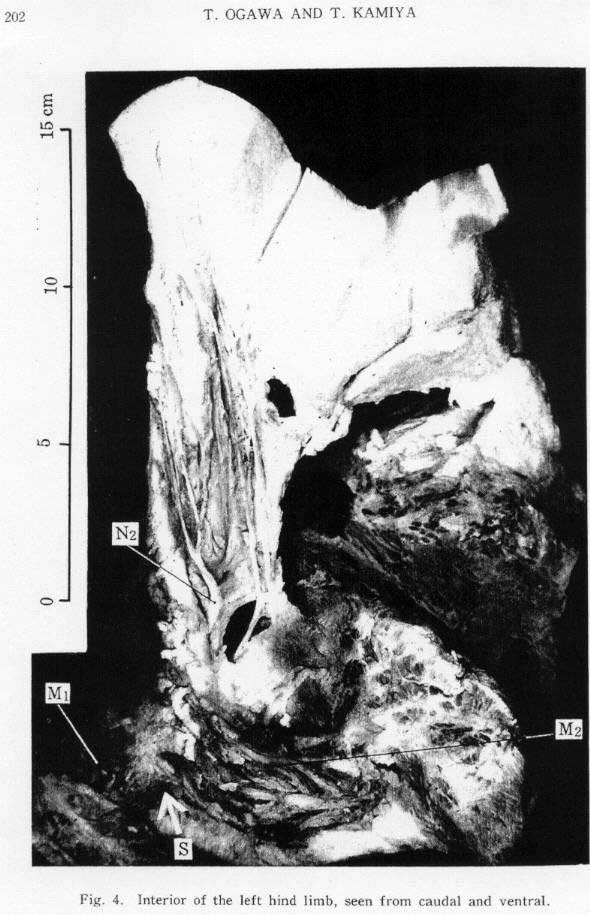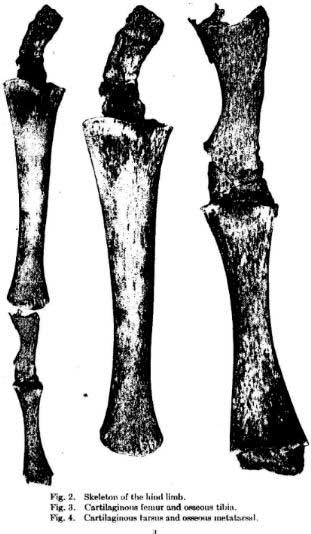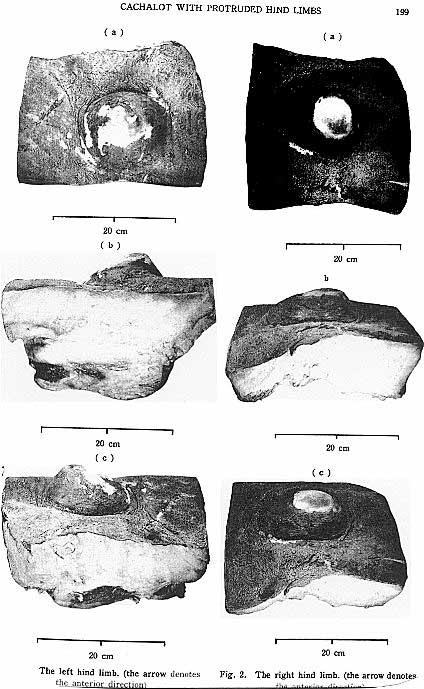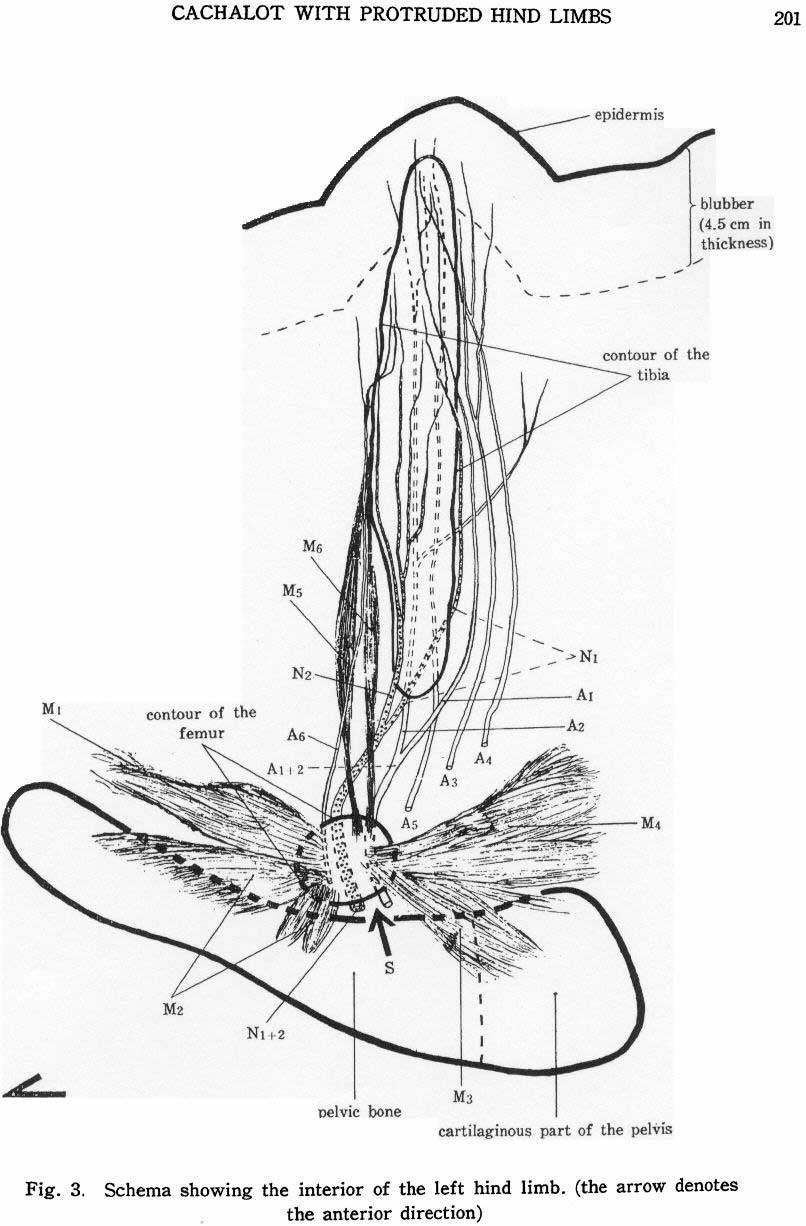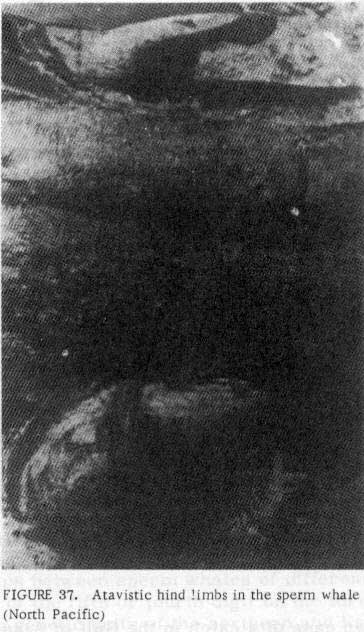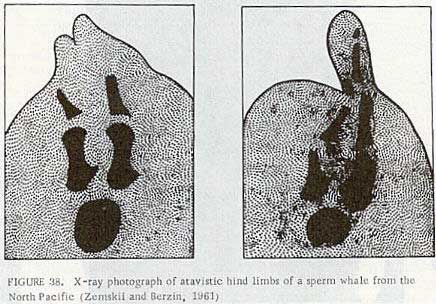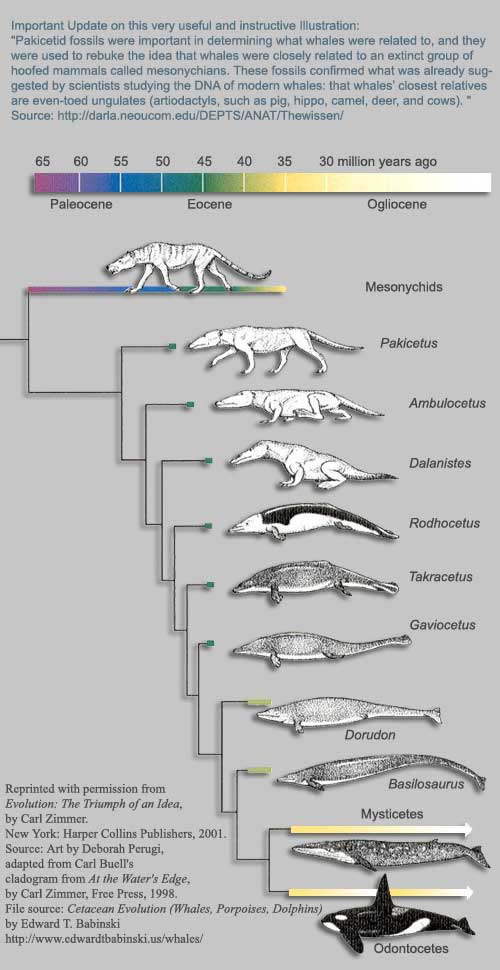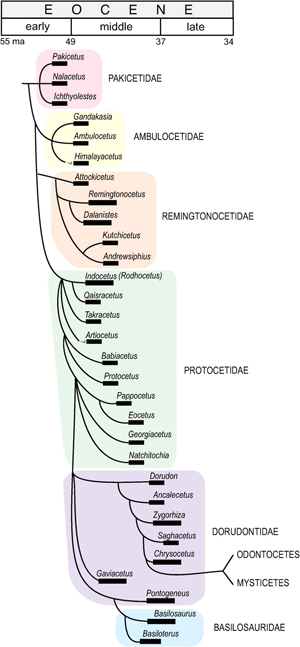Pelvic bone on modern whales
Photographs of Humpback and Pilot Whale mounts contributed by the Milwaukee Public Museum with commentary by Professor Hans Thewissen.
The Evolution of Whales
Based on the sensational National Geographic article from November 2001, The Evolution of Whales. Overview of whale origins. Includes illustrations based on fossil progressions in transitional whales and dolphins. Additional comments from early whale expert and Paleontologist, J.G.M. Thewissen, Northeastern Ohio Universities College of Medicine.
Hind Limb Bud Images, Dolphin Embryo and Fetus Development
Photographs of hind limb buds on a five week old Pantropical Spotted Dolphin embryo, and 1.5 to 4 month fetus development. Images courtesy of Professor J.G.M. Thewissen.
Sirenian Evolution
(Manatee, Sea Cow, Dugong)
Sirenians and Elephants are evolved from a common ancestor. Like whales, sirenians returned to the water. Though hind limbs on whales may be rare and difficult to witness, many sirenians (not all) still retain vestigial toenails like their elephant cousins, and share other traits in common with modern elephants. Includes commentary between LeVar Burton and Dr. Mark Lowe, Veterenary Science. Contains images courtesy of Reading Rainbow, PBS Television. (GPN/Nebraska Educational Telecommunications and WNED-TV, Buffalo NY).
- A Dolphin with Hind Limbs, Science Blogs
- Dolphin May Have 'Remains' of Legs, Associated Press
- Answers In Genesis Response to Dolphin Hind Limb Discovery
- Response to AiG's Response on Dolphin Hind Limbs
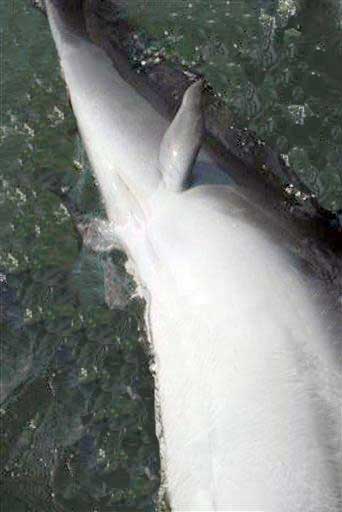
Dolphin Hind Limbs - Response to Answers in Genesis (AiG)
Answers in Genesis' changing views on hind limb rudiments on cetaceans after discovery of dolphin with four fins.
CONTENTS:
- INTRODUCTION: The Evolution of Whales
Introduction into the controversy over the origins of modern whales which retain vestigial hind limb rudiments. Cladogram of early whales to modern whales. - REVIEW OF Strange Tale of the Leg on the Whale
Vestigial pelvises on whales, denial of femurs by Creationists (calling it bone disease). Creationists say these remnants were designed for copulation only, but science says this is how Evolution works --finding new purpose for old structures. - REVIEW OF Strange Tale of the Leg on the Whale
Out of date information published by Creationists. New fossil finds of early whales. Contains image of complete leg bones from basilosaurus, and reconstruction of the creature's likely appearance. - REVIEW OF A Whale of a Tale? (Ambulocetus) Don Batten
The whale tail and Ambulocetus' lack of a fluke, nasal drift and canine teeth in early whales. Image showing nasal drift from early to modern whales. - REVIEW OF Overselling of Whale Evolution
Questions on the dating of varied early whales, and further suggested reading on whale evolution. The evolution of eco-location, nursing young (suggesting common ancestry with land mammals), and the brain of humans vs. cetacea. - Land to Sea: Inner Ear Transitions in Whales
Images of transitional inner ear of whales, as they evolved from land to sea mammals. Professor Hans Thewissen explains the differences of earbone fossils, the incus and tympanic. - Pelvic Bones on Whales, Ambulocetus
Answers in Genesis knowingly placed out of date information on the web to refute up to date information. An example of blatant non-scientific misrepresentation of fossil evidence in an attempt to discredit evolutionary fact as speculative theory. - Example One of Hind Limb Rudiments
1958, caught in the Bering Sea - An X-Ray revealing bone structures and a photograph taken of the protrusions on the whale's body. - Example Two of Hind Limb Rudiments
1919 Historical record and photos of a female humpback with protruded hind limbs including femur, tibia and tarsus, and 1914 report of protruded limbs on embryoes. Images of protruded limb on Cachalot. - Example Three of Hind Limb Rudiments
Female Sperm Whale, caught in 1956. Upon examining the interior of the limb three partially cartilaginous bones were found. Corresponding to the pelvis, femur, and possibly to the tibia. - Example Four of Hind Limb Rudiments
A list of catches between 1956 and 1963 of whales caught and discovery of hind limb protrustions, including the approxiamate percentage of whales. - Example Five of Hind Limb Rudiments
Struthers' commentary on the dissection of a right whale and photos from the Museum of Zoology, including further diagrams. Some interesting facts concerning the pelvic anatomy of the majority of modern day whales. - Evolutionary Atavisms
Atavisms and tails on human beings, summary to a creationist by K. Nahigian 
Skeleton of adult male, Blaineville's Beaked Whale, Mesoplodon densirostris in the Australian Museum, Sydney (after Van Beneden and Gervais, 1868-1879). Forelimb and and pelvic rudiment are from an adult male of the same species in the American Museum of Natural History (after Raven, 1942).
Encyclopedia of Marine Mammals
William F. Perrin, Bernd Wursig, J.G.M. ThewissenRECOMMENDED READING
Whale Evolution - Origine (trueorigins.us)
An analysis of the newer evidences for macro-evolution, and problems with scriptures.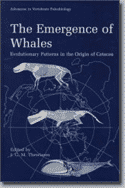
The Emergence of Whales, Evolutionary Patterns in the Origin of Cetacea (Advances in Vertebrate Paleobiology) (Hardcover)
by J. G. M. Thewissen (Editor)Review from Journal of Mammology, August 6, 2002
Reviewer: Jasmine Benzvi (New York, NY)
'Up to now, a 'state of the art' summary of research on whale origins has not been available. This book admirably fills that void and should be added to the library of any serious mammologist or paleomammalogist.'
- by Annalisa Berta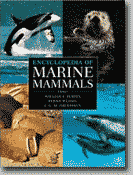
Encyclopedia of Marine Mammals (Hardcover)
by William F. Perrin (Editor), Bernd Wursig (Editor), J.G.M. Thewissen (Editor)- "This impressive reference would make an excellent addition to any library..."-ENCYCLOPEDIA OF DINOSAURS AND VOLCANOES (February 2003)
- "Very highly recommended for students, professionals, researchers and lay people with an interest in marine mammals."
WILDLIFE ACTIVIST (Fall 2002) - "...an excellent resource for beginning research. ...This encyclopedia is very highly recommended for all academic and larger public libraries." Teresa Bowden, Villanova University Falvey Memorial Library for E-STREAMS (September 2002)
- "...students beginning postgraduate study on marine mammals and researchers and academics working on marine mammals will find it indispensable."
On 6/17/2005 3:51:22 PM, Terry wrote:
home.earthlink.net/~w0dfi/pet.html
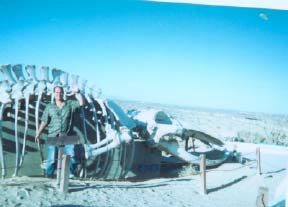
I think you will really enjoyed this full whale skelton, I think it is a "blue" whale I forget…maybe you have seen it?
I took the picture in the Gulf of Mexico this year but the Skeloton is on Los Conchos Beach east of Puerte Penasco, Sonora, Mexico.
I only had an instant Camera but that's better than nothing. I think it was a Blue whale?? or one with a huge mouth? -Terry and Pets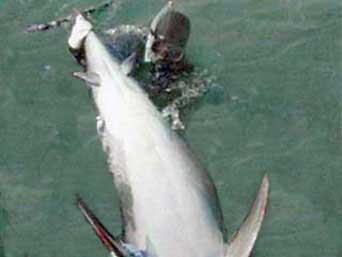
TOKYO Nov 5, 2006 (AP), Japanese scientists reported a bottlenose dolphin, has an extra set of fins that could be the remains of hind limbs. The dolphin was captured alive in western Japan on Oct. 28, by Fishermen. "I believe the fins may be remains from the time when dolphins' ancient ancestors lived on land," said Seiji Osumi, of Tokyo's Institute of Cetacean Research. The hind fins are much smaller than the front fins and are about the size of human hands, protruding near the tail. The dolphin measured approx 9 feet in length.
| Japan's Four-Fin Dolphin Discovery | ||
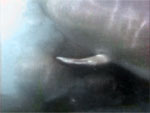 |
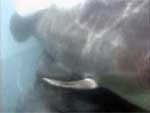 |
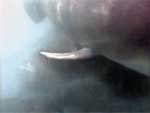 |
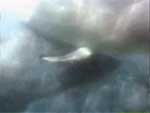 |
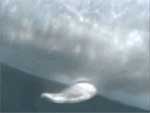 |
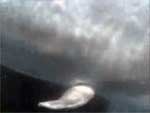 |
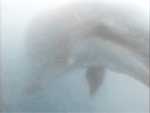 |
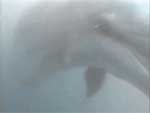 |
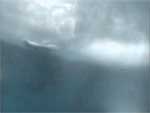 |
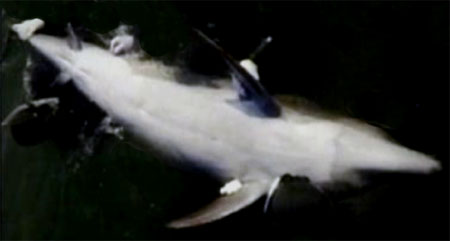 |
||


